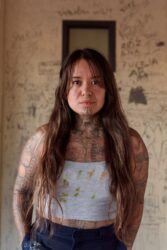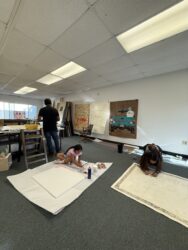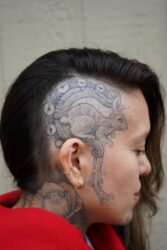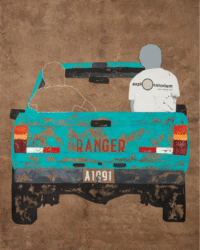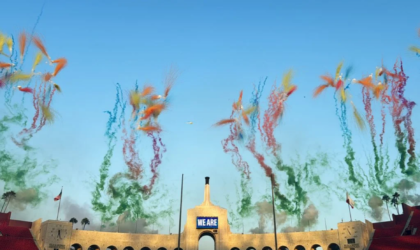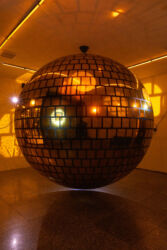Napa, CA-based artist Arleene Correa Valencia talks about:
Why she lives in Napa, CA, and the two distinct versions of the town, for the wealthy and for the poor (“you’re either the owner of the vineyard, or you’re working the vineyard,” as she put it); how she’s the first generation to not be working the vineyards, his dad having worked the vineyard for a period before transitioning to hand-painting etched wine bottles for a winery (which he had to ultimately leave for lack of being paid enough because he didn’t have an MFA); her favorite wines by grape (Pinots and Cabs from Sonoma mainly), and more recently a master fabricator color theorist and surface touch-up artist; making her dad’s dreams to become an artist come to fruition through her; how she always refers to the work she makes as ‘ours,’ assuming everyone knows that her father always has a hand in the projects, in addition to consistently collaborating with makers from her culture of origin; the letters she exchanged with her father, while he was working to lay a foundation for the family to move to the U.S., among the artworks acquired by Stanford’s Cantor Arts Center; her complicated DACA (Dreamer) status, and the exhibition she was able to have in Mexico (in Puebla, about 2 hours from Mexico City) which ultimately allowed her to apply for, and get, a green card; how she had to defer her dream to go to a 4-year university or art school until she received DACA status, and then she got a Diversity Scholarship that allowed her to attend California College of the Arts, which she would never otherwise would have been able to afford; how one of her 1st interviews was for someone interested in learning about being undocumented in the arts (originally published in Hyperallergic, she had to have it taken down for legal reasons to protect her); how her various supporters propelled her into her art-making and her art school education, and in turn the questions she asks herself about how she can help others, undocumented and otherwise…
This podcast relies on listener support; please consider becoming a Patreon supporter of the podcast, for as little as $1/month, here: https://www.patreon.com/theconversationpod
In the 2nd half of our conversation (available on Patreon), Arleene talks about:
How her mom comes from a family with 36 brothers and sisters, so is part of an enormous extended family; the BRCA mutation in her family, in which bodies are much more susceptible to various cancers, including breast cancer and ovarian; why ICE hasn’t been active in the Napa Valley area, very likely because people of wealth and/or power won’t allow their wine supply to be affected; how aware she is of her career and her sales, and that she’s proud of her production rate and the work her gallery is doing with her; the demand for her truck paintings, and why she has a need to make those paintings, not producing them for a paycheck; when she requested a collector give her more time to finish a piece that she wasn’t happy with, and re-made it; how integral her dad is to her work and her process, and how he’s celebrated along with her, if only through his tremendous pride in her, and that it wouldn’t all happen without him; the work they do with a tattoo family, and how it’s similar to the dynamic that she and her dad as a family do together, which she acknowledges is a bit like the man behind the curtain; her Tochtli (rabbit) tattoo, a symbol in her family that signifies selflessness and the ultimate sacrifice; how the evolution of her being tattooed, which started when she was 18, has been about honoring the story of her ancestry and claiming her identity, and how her brothers, like her, are acquiring full body suits of tattoos.

